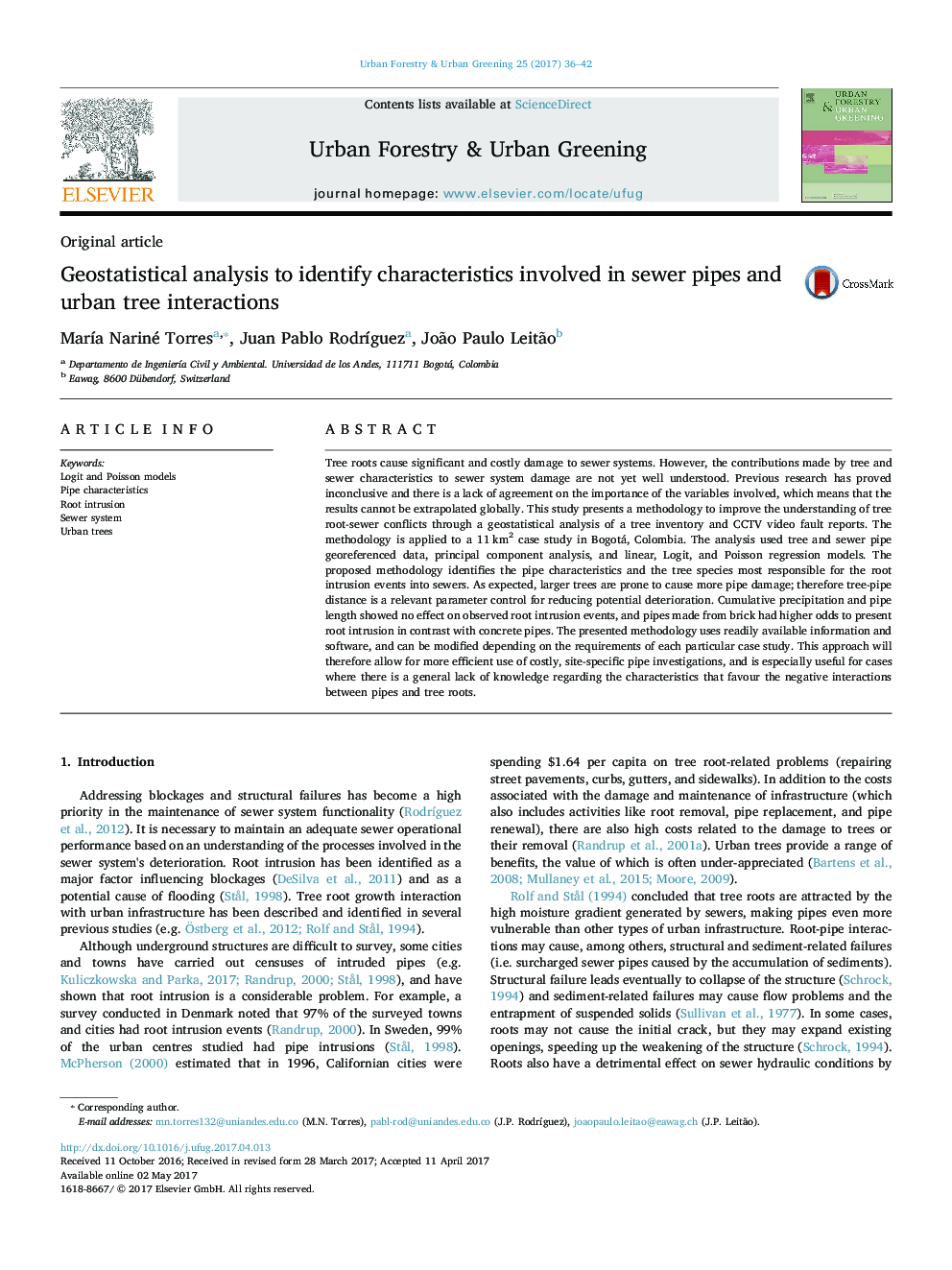| Article ID | Journal | Published Year | Pages | File Type |
|---|---|---|---|---|
| 6461849 | Urban Forestry & Urban Greening | 2017 | 7 Pages |
â¢Tree-root intrusion in sewers was investigated in the city of Bogotá (Colombia) based on sewer CCTV inspection data and sewer and tree inventories.â¢The proposed geostatistical methodology is suitable for the identification of the most critical tree characteristics for tree-root sewer intrusion.â¢Tree total height, trunk height and equatorial diameter have a positive influence on the number of root intrusions.â¢For the analysed sewer network and trees city inventory, root intrusion odds were found to be 1.7 higher for domestic sewers when compared to combined sewers.â¢Ten tree species with high root strength were identified to be be responsible for tree root intrusion.
Tree roots cause significant and costly damage to sewer systems. However, the contributions made by tree and sewer characteristics to sewer system damage are not yet well understood. Previous research has proved inconclusive and there is a lack of agreement on the importance of the variables involved, which means that the results cannot be extrapolated globally. This study presents a methodology to improve the understanding of tree root-sewer conflicts through a geostatistical analysis of a tree inventory and CCTV video fault reports. The methodology is applied to a 11Â km2 case study in Bogotá, Colombia. The analysis used tree and sewer pipe georeferenced data, principal component analysis, and linear, Logit, and Poisson regression models. The proposed methodology identifies the pipe characteristics and the tree species most responsible for the root intrusion events into sewers. As expected, larger trees are prone to cause more pipe damage; therefore tree-pipe distance is a relevant parameter control for reducing potential deterioration. Cumulative precipitation and pipe length showed no effect on observed root intrusion events, and pipes made from brick had higher odds to present root intrusion in contrast with concrete pipes. The presented methodology uses readily available information and software, and can be modified depending on the requirements of each particular case study. This approach will therefore allow for more efficient use of costly, site-specific pipe investigations, and is especially useful for cases where there is a general lack of knowledge regarding the characteristics that favour the negative interactions between pipes and tree roots.
